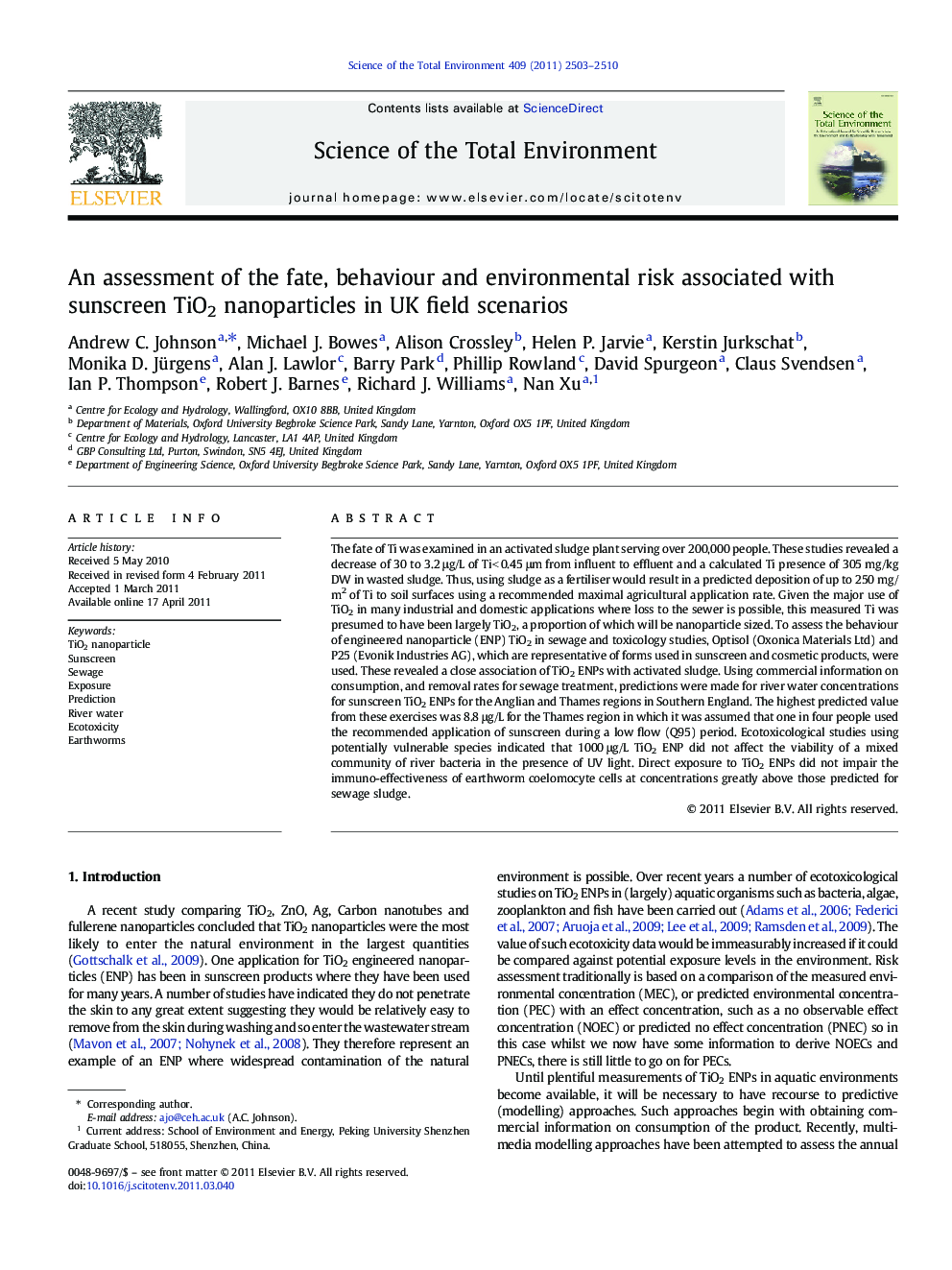| کد مقاله | کد نشریه | سال انتشار | مقاله انگلیسی | نسخه تمام متن |
|---|---|---|---|---|
| 4430135 | 1619849 | 2011 | 8 صفحه PDF | دانلود رایگان |

The fate of Ti was examined in an activated sludge plant serving over 200,000 people. These studies revealed a decrease of 30 to 3.2 μg/L of Ti < 0.45 μm from influent to effluent and a calculated Ti presence of 305 mg/kg DW in wasted sludge. Thus, using sludge as a fertiliser would result in a predicted deposition of up to 250 mg/m2 of Ti to soil surfaces using a recommended maximal agricultural application rate. Given the major use of TiO2 in many industrial and domestic applications where loss to the sewer is possible, this measured Ti was presumed to have been largely TiO2, a proportion of which will be nanoparticle sized. To assess the behaviour of engineered nanoparticle (ENP) TiO2 in sewage and toxicology studies, Optisol (Oxonica Materials Ltd) and P25 (Evonik Industries AG), which are representative of forms used in sunscreen and cosmetic products, were used. These revealed a close association of TiO2 ENPs with activated sludge. Using commercial information on consumption, and removal rates for sewage treatment, predictions were made for river water concentrations for sunscreen TiO2 ENPs for the Anglian and Thames regions in Southern England. The highest predicted value from these exercises was 8.8 μg/L for the Thames region in which it was assumed that one in four people used the recommended application of sunscreen during a low flow (Q95) period. Ecotoxicological studies using potentially vulnerable species indicated that 1000 μg/L TiO2 ENP did not affect the viability of a mixed community of river bacteria in the presence of UV light. Direct exposure to TiO2 ENPs did not impair the immuno-effectiveness of earthworm coelomocyte cells at concentrations greatly above those predicted for sewage sludge.
Research Highlights
► 90% of Ti <0.45 mm removed in an activated sludge plant.
► Sunscreen nano TiO2 not predicted to exceed 9 mg/L in UK rivers.
► NOEC of 1000 mg/L reported for nano TiO2 and UV light for river bacteria.
► TiO2 ENPs did not impair the immuno-effectiveness of earthworm coelomocyte cells.
► Predicted nano TiO2 values below harmful levels for organisms in water column.
Journal: Science of The Total Environment - Volume 409, Issue 13, 1 June 2011, Pages 2503–2510